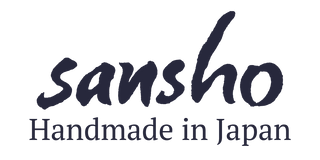Before the Meiji reforms in the late 19th century, the modern prefecture of Hiroshima was actually two domains: Aki and Bingo (although both under the control of the famous Mōri clan until the battle of Sekigahara and the Tokugawa rise to power). Bingo was a famous centre of textile dyeing and weaving, specialising in colourful patterns.

The brown highlights the modern Hiroshima prefecture in South West Japan, the Eastern part was the old han of Bingo.
Now very few weavers remain. The Kittaka family workshop does not make traditional bingo gasuri, but instead have focused on an equally old tradition where persimmon is used as a natural dye. Persimmon has been used for centuries as a dye, a wood preservative and for preparing and waterproofing paper. The preparation of persimmon is a relatively unappealing job because of the smell but it is a skillful job in its own right.
The Kittaka workshop use slightly more modern looms than the other weavers which are from the second quarter of the 20th Century and are 100cm wide. But it is still an evocative building full of the clatter of weaving.

The Kittaka family's timber-framed early 20th Century weaving workshop
They are the only remaining commercial weaver using persimmon yarn that we can find and the soft rusty tones of the persimmon make their fabric very popular for lampshades.

Persimmon and indigo dyed yarns drying in the sun

